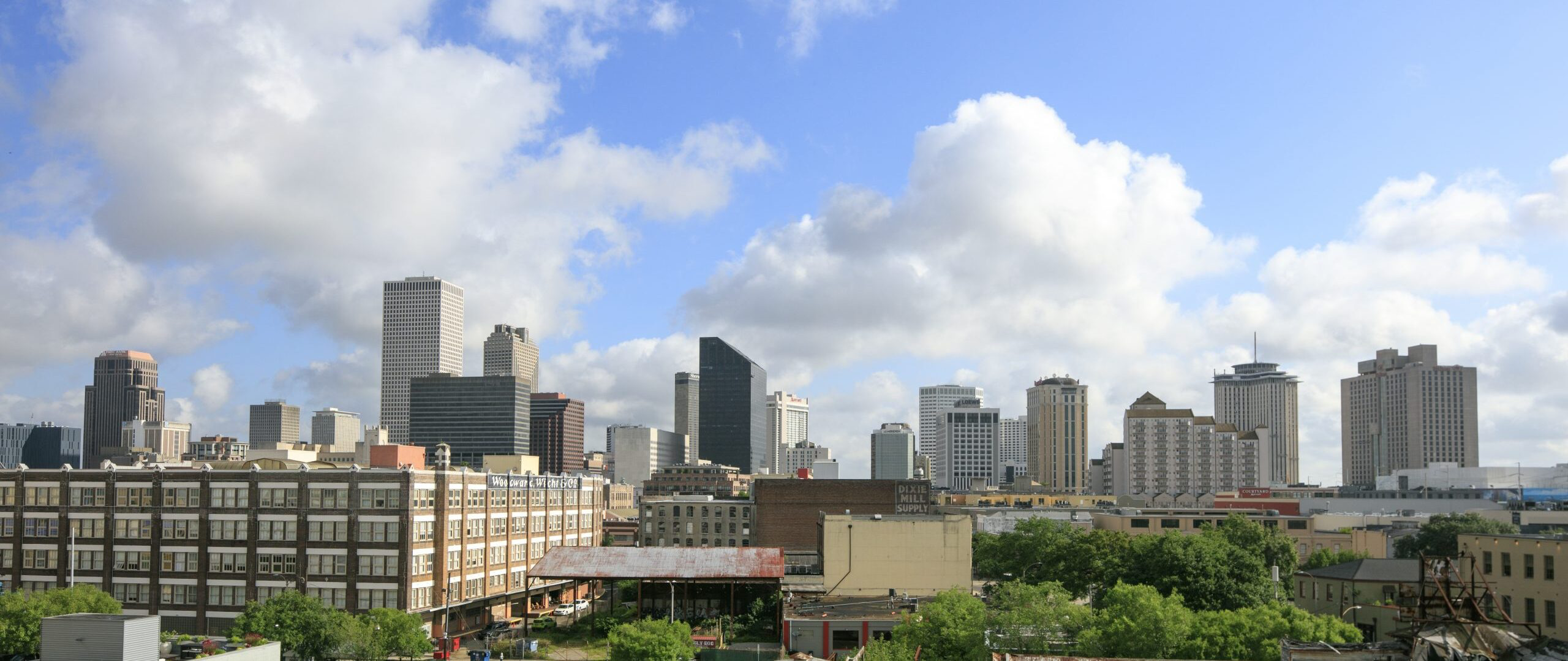The bustling Central Business District is several distinct neighborhoods rolled together into one vibrant urban core. Canal Street, the historic commercial corridor of the city, is alive with hotels, restaurants, shops and its own streetcar line. Picayune Place, a historic district in the financial heart of the city, is dominated by offices and residences, all within century-old buildings. Lafayette Square, anchored by Gallier Hall, New Orleans’ former City Hall, is a welcome green space that hosts a free midweek concert series in the spring and several diverse weekend festivals throughout the year. The Warehouse District is home to art galleries, world-class museums, excellent restaurants and luxurious condos.
Part of the huge plantation allotted to New Orleans founder Jean Baptiste LeMoyne, Sieur de Bienville, in 1719, the lands comprising the Central Business District were sold to the Society of Jesus (the Jesuit priests) in 1723, then divided among several smaller landowners, including Bertrand Gravier and Delord Sarpy. Gravier subdivided his lands in 1788, forming New Orleans’ officially incorporated neighborhood, Faubourg Ste. Marie.
With the construction of the First Presbyterian Church, the St. Charles Hotel and the St. Charles Theater, the new American Sector (so-called for the Americans who settled here) had begun to challenge the Vieux Carré as New Orleans’ financial and cultural center by the 1830s. In the beginning of the 20th century, the CBD was a thriving commercial and retail center, and its growth continued after the Depression.
By the 1960s, though, the Industrial Canal had rerouted port activity, and suburban shopping malls had emptied downtown. Highway construction further endangered the residential population. During this era, downtown was kept afloat by its proximity to the preserved French Quarter and Uptown neighborhoods. In 1963, Poydras Street, once the site of a historic market, was widened to accommodate high-rise office towers. The land speculation that followed saw entire blocks razed for office buildings and parking lots. Preservationists organized in the 1970s to stop the demolition of 19th– and early 20th-century buildings and to encourage their renovation.
In 1978, the City Council established the Central Business District Historic District Landmarks Commission to govern the neighborhoods’ demolition and new construction. Since then, an incredible amount of private investment has seen the adaptation of historic commercial buildings into hotels, residences, offices and more. The Louisiana World Exposition of 1984 further revitalized the area, turning the sleepy Warehouse District into a vibrant neighborhood with art galleries, restaurants, hotels and residences.
The National Register of Historic Places lists the area as two different districts: the Upper and Lower Central Business District. Today, you can find scores of world-class sculptures by local, national and internationally known artists throughout the CBD, including several pieces on Poydras Street sponsored by the Helis Foundation.



